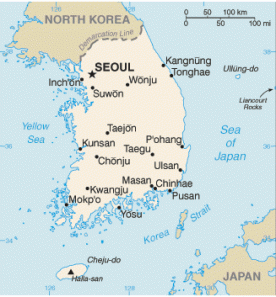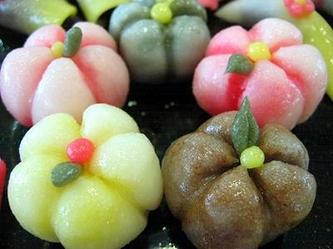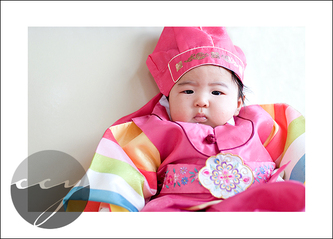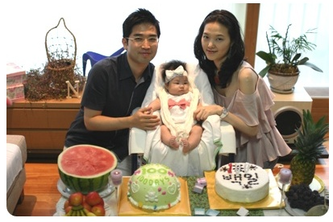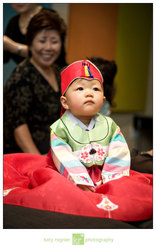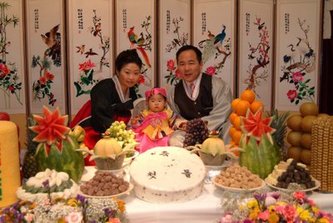Why South Korea??
South Korea
About South Korea

Population
Korea's population is one of the most ethnically and linguistically homogenous in the world. Except for a small Chinese community (about 20,000), virtually all Koreans share a common cultural and linguistic heritage. With 48.38 million people, South Korea has one of the world's highest population densities. Major population centers are located in the northwest, southeast, and in the plains south of the Seoul-Incheon area.
Korea has experienced one of the largest rates of emigration, with ethnic Koreans residing primarily in China (2.4 million), the United States (2.1 million), Japan (600,000), and the countries of the former Soviet Union (532,000).
Language
The Korean language is related to Japanese and Mongolian. Although it differs grammatically from Chinese and does not use tones, a large number of Chinese cognates exist in Korean. Chinese ideograms are believed to have been brought into Korea sometime before the second century BC. The learned class spoke Korean, but read and wrote Chinese. A phonetic writing system ("hangul") was invented in the 15th century by King Sejong to provide a writing system for commoners who could not read classical Chinese. Modern Korean uses hangul almost exclusively with Chinese characters in limited use for word clarification. Approximately 1,300 Chinese characters are used in modern Korean. English is taught as a second language in most primary and secondary schools. Chinese and Japanese are widely taught at secondary schools.
Religion
Half of the population actively practices religion. Among this group, Christianity (49%) and Buddhism (47%) comprise Korea's two dominant religions. Though only 3% identified themselves as Confucianists, Korean society remains highly imbued with Confucian values and beliefs. The remaining 1% of the population practice Shamanism (traditional spirit worship) and Chondogyo ("Heavenly Way"), a traditional religion..
Taken from U.S. Department of State website
South Korean Traditions
Baek-Il - 100th Day Celebration
On the 100th day after a child's birth, a small feast is prepared to celebrate the child's having survived this difficult period. If the child is sick at this time, the family passes the day with neither announcement nor party, for to do otherwise is considered bad luck for the infant.
At this time the samshin halmoni is honored with offerings of rice and soup in gratitude for having cared for the infant and the mother, and for having helped them live through a difficult period. The family, relatives and friends then celebrate with rice cakes, wine, and other delicacies such as red and black bean cakes sweetened with sugar or honey.
To prevent potential harm to the child and to bring him or her good luck and happiness, red bean cakes are customarily placed at the four compass points within the house. If the steamed rice cakes are shared with 100 people, it is believed that the child will have a long life. Therefore, rice cakes are usually sent to as many people as possible to help celebrate the happiness of the occasion. Those who receive rice cakes return the vessels with skeins of thread, expressing the hope of longevity, and rice and money, symbolizing future wealth.
Credit to: www.lifeinkorea.com and www.asianinfo.org
Tol (also written Dol)-The First Birthday!
Traditionally, Koreans would pray to Sanshin (a mountain god) and Samshin (a birth god, also called Samshin-halmuni"grandmother") on certain days following a child's birth (birth, 3-7 days after birth, and 100 days after birth). They believed thatSamshin resided in the cloth surrounding a baby.
To prepare the praying table, the parents placed a bowl of steamed white rice, sea mustard soup (miyeok-guk), and a bowl of pure water on the table. Next to the table they placedsamshin siru (layered red bean rice cake). This rice cake was not shared outside the family because they believed that sharing this particular item with people outside the family would bring bad luck to the child.
After the table was prepared, the child's mother or grandmother would pray with two hands together. Rubbing her palms together, she would ask for her child's longevity, wish luck to the mountain god, and and give thanks to the birth god. This was acomppanied by repeated bowing. Male family members were not allowed to join in thes ceremony. Only female family members were allowed to participate.
Seoulites perform this ceremony early in the morning on the child's birthday. Residents of some other areas do it the night before the birthday.The clothes worn for the tol (tol-bok) are colorful, dressy clothes. They differ depending on the child's sex. Both boys and girls wear a long tol-ddi (a belt that wraps around the body twice) for longevity and a tol-jumuni (pouch) for luck. Silk cloth is used to make the tol-jumuni, folded at the top with a colorful thread pull-string to open and close. Buttons are not used.
The parents prepare a special Tol table to celebrate the child's birthday. The main food includes ddeok (rice cakes) and fruits. Over 12 different kinds of ddeok are prepared, including paekseolgi (white steamed rice cakes), susu-kyongdan (rice cakes coated with rough red bean powder), chapsal-ddeok or chal-ddeok, mujigae-ddeok (rainbow colored steamed rice cake), songp'yeon (half moon shaped rice cakes), injulmi (coated glutinous rice cakes), and gyep'i-ddeok (puffed air rice cakes). Among these, paekseolgi and susu-kyongdan are always included. Fruits can vary according to the season of the birthday. Different colors of seasonal fruits can be prepared and displayed in a row. Also, a bowl of rice, sea mustard soup, and many other various foods can be displayed.
Along with food, other items are needed for holding the Toljabee event. Items such as large bundle of thread, a brush, a Korean calligraphy set, pencil, book, money (10,000 won bills), bow and arrow (needle, scissors, and ruler for girls) are arranged on the table to predict the child's future. The birthday child will be placed at the table so that the other guests can face him or her. Parents often sit the child on the bolou (Korean traditional mattress) and several bangsuk (Korean cushions). Since the child is small, this allows for getting better pictures. For the background, a Korean traditional screen is used at the hotel or other banquet hall. In the toljabee event, the birthday child goes around the table and picks up items that attract him or her. The child's future is predicted according to the what he or she grabs. After placing the child in front of the table, the child's father becomes the guide for the child to go around the table and grab whatever he or she wants. The first and second items the child grabs are considered the most important. Usually Korean parents place the items that they want the child to choose near to the edge of the table. The child's future is predicted according to the items:
-bow and arrow: the child will become a warrior
-needle and thread: the child will live long
-jujube: the child will have many descendants
-book, pencil, or related items: the child will become a successful scholar
-rice or rice cake: the child will become rich (some resources say choosing a rice cake means the child is not smart)
-ruler, needle, scissors: the child will be talented with his/her hands
-knife: the child will be a good cook
Credit to: www.lifeinkorea.com and www.asianinfo.org
